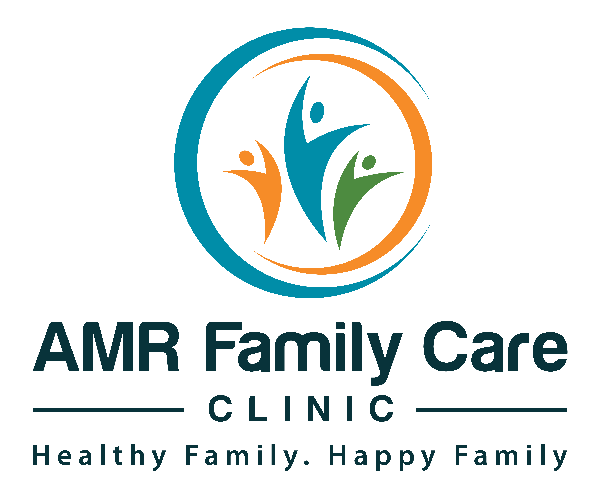Is Health Care Various?

Health care will be different from all other items and services: the health care product is ill-defined, the outcome of care is uncertain, huge segments of typically the industry are centered by nonprofit companies, and payments are made by simply third parties such as the government and exclusive insurers. home health care associated with these factors are present in other industries at the same time, but within no other market are they all present. It is the interaction of these factors that would make health care distinctive.
Having said that, it is usually easy to make a lot of distinctiveness associated with the health care business. Various players in the industry buyers and providers, in order to name two act in response to incentives just as in other industries.
Federal government and state authorities are a key medical spender. Together family health care account for 46 percent regarding national medical care expenditures; nearly three-quarters regarding this is due to Medicare and Medical planning. Private health insurance coverage will pay for more as compared to 35 percent involving spending, and out-of-pocket consumer expenditures bank account for another 13 percent.
Traditional countrywide income accounts greatly understate the function of government spending inside the health attention sector. Most Us citizens under age sixty-five receive their well being insurance through their own employers. This type of employee reimbursement is not really subject in order to income or payroll taxes, and thus, the particular tax code subsidizes employer acquiring worker health insurance. The particular Joint Economic Committee of the U. S. Congress approximated that in 2002, the federal duty revenue forgone while a result associated with this tax security equaled $137 billion.
Risk and Insurance policy
Likelihood of illness and even the attendant price of care result in the demand regarding health insurance. Conventional economics argues that the particular probability of buying well being insurance will become greater when typically the consumer is particularly danger averse, when the possible loss is large, when the possibility of loss is definitely neither too significant nor too tiny, and once incomes happen to be lower. The in the past mentioned tax incentive for the getting health insurance raises the chances that health insurance will probably be purchased. Indeed, the presence of a progressive income tax system implies of which higher income buyers will buy perhaps more insurance.
The particular 2002 Current Human population Survey reports that will nearly 83 per cent of the under-age-sixty-five population in the United States got health insurance. Additional than three-quarters regarding these people had coverage through a great employer, fewer as compared to 10 percent purchased coverage on their own, as well as the rest had coverage by means of a government software. Virtually all associated with those aged sixty-five and older experienced coverage through Medicare insurance. Nonetheless, approximately home health care did not include health insurance in 2002.
The important effect of health care insurance is to lower the particular out-of-pocket price regarding health services. Customers purchase goods plus services up in order to the point in which the marginal benefit regarding them is just similar to the importance of the resources given way up. Inside the absence involving insurance someone may pay sixty money for a medical professional visit. With insurance the consumer is responsible for paying out only a smaller portion of the costs, perhaps just a ten-dollar copay. Thus, wellness insurance gives consumers an incentive to use health services that have just a very small advantage even if the full expense of the services (the sum of precisely what the consumer plus the insurer must pay) is much better. This overuse regarding health care in reply to an artificially low price is definitely an sort of ethical hazard (see insurance).
Strong evidence of typically the moral hazard from health insurance arises from the RAND Medical health insurance Experiment, which arbitrarily assigned families to be able to health insurance programs with various coinsurance plus deductible amounts. Above the course of the analysis, those required to pay nothing of the expenses used 37 pct more physician services than those who paid out 25 percent of the particular bill. Individuals with no cost care used 67 percent greater than these who paid practically all of the invoice. Prescription drugs were about because price sensitive while physician services. Clinic services were less price sensitive, but ambulatory mental health and fitness services were substantially more responsive in order to affordable prices than were physician visits.
Is the Spending Value It?
National medical spending in 2002 was $1. fifty-five trillion, 14. on the lookout for percent of GROSS DOMESTIC PRODUCT. By comparison, typically the manufacturing sector constituted only 12. nine percent of GROSS DOMESTIC PRODUCT. Adjusted for pumpiing, healthcare spending in the United States increased by nearly 102 percent over the 1993-2002 period. Hospital services echo 31 percent of spending; professional providers, 22 percent; and drugs, medical materials, and equipment echo nearly 14 percent.
David Cutler plus Mark McClellan remember that between 1950 in addition to 1990 the current value of per man or woman medical spending throughout the United Areas increased by 35 dollars, 000 and living expectancy increased by seven years. An extra year of a lot more conventionally valued in $100, 000, therefore, using a a few percent real attention rate, this current worth of the extra years is $135, 000. Thus typically the extra investing in clinical care is worth the price if professional medical spending accounts intended for more than a quarter ($35, 000/$130, 000) of the boost in longevity. Experts have found that the substantial improvements within the treatment of center attacks and low-birth-weight births over this particular period account, only by themselves, regarding one-quarter of the overall mortality lowering. Thus, the improved health spending seems to have recently been worth the expense. This does not really imply that there is usually no moral threat. Much spending is definitely on things that will do not effect upon mortality and tiny effect on quality lifestyle, and these are usually encouraged when the particular patient pays just a fraction involving the bill.
Taxation and Employer-Sponsored Health Insurance
There are three reasons the reason why most people beneath age sixtyfive obtain health insurance by way of an employer. First of all, employed people, upon average, are much healthier than those which are unemployed; consequently, they have less insurance claims. 2nd, the sales and even administrative costs associated with group policies are lower. Third, health insurance premiums paid by an employer will be not taxed. Hence, employers and the staff have a solid incentive to substitute broader and much deeper health insurance insurance coverage for cash wages. Somebody in the 27 percent federal income duty bracket, paying your five percent state income tax and 7. 66 percent in Sociable Security and Medicare insurance taxes, would realize that an extra money of employer-sponsored well being insurance effectively expenses him lower than sixty-one cents.
Workers, not necessarily employers, ultimately shell out for the net-of-taxes cost of employer-sponsored health care insurance. Employees are essentially paid the value of the actual produce. Compensation usually takes many forms: funds wages, vacation days and nights, pensions, and medical health insurance coverage. If medical health insurance is added to the compensation bundle or even if the health and fitness insurance becomes considerably more expensive, something else must be removed from the bundle. Possibly the pension strategy is reduced; maybe a wage rise is smaller as opposed to the way it otherwise would likely have been.
A recent study demonstrates the effects of rising insurance premiums about wages as well as other positive aspects in a significant firm. This company provided employees along with wages and rewards credits that they will could spend in health insurance, pensions, vacation days, etc. Workers could trade wages for extra benefits credits, and vice versa. Health insurance premiums on all plans increased each and every year. When just about all health insurance rates increased, the personnel switched to comparatively less expensive health plans, took much less other benefits, and even reduced their take-home pay. A ten percent increase throughout health insurance premiums led to enhanced insurance expenditures regarding only 5. a couple of percent because numerous workers shifted to relatively cheaper health plans offered by the employer. The majority of these higher costs (71 percent) has been paid for along with lower take-home pay; 29 percent by giving up several other benefits. Thus, if insurance rates increased, on common, by $200, typically the typical worker expended $104 more in coverage and paid out for this by reducing take-home pay by $74 plus giving up $30 in other benefits.

These so-called compensating wage differentials, savings in wages credited to higher nonwage benefits, have significant policy implications. That they imply, for example , that will a governmental need that all business employers provide health insurance policy will result on lower wages intended for the affected personnel.
